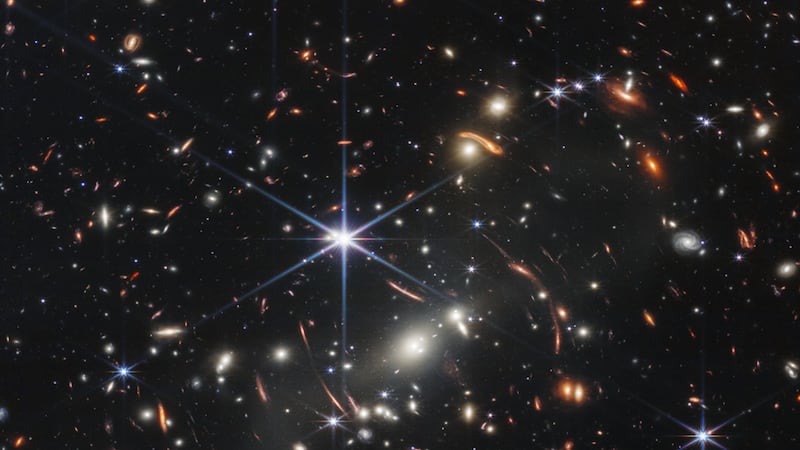I recently visited a primary school and prayed with two primary seven classes preparing to receive the sacrament of Confirmation. In helping the children understand that the sacrament will enrich them with the special strength of the Holy Spirit, the parish priest reminded them: “Just because we can’t see something doesn’t mean it’s not there.”
This brought to mind one of science’s biggest mysteries: in recent years, astronomers have discovered that when they look out at the universe, the stuff they can see – stars, planets and galaxies – makes up only around 5 per cent of what’s actually out there.
Researchers at the forefront of science accept the existence of the invisible in order to explain what they observe. This intricate understanding of the world is of immense support to Christians, who believe in a deeper reality to life beyond the purely tangible.
The scientific community currently estimates that the universe is made up of 5 per cent ‘normal matter’, that we can see, 25 per cent ‘dark matter’, and 70 per cent ‘dark energy.’
As the science journalist Seán Duke wrote in The Irish Times, the dark matter and dark energy “remain hidden, but physicists infer their presence from how visible matter behaves. Invisible gravitational effects are thought, for example, to hold solar systems, and galaxies together that would otherwise fall apart," acting like an ‘invisible glue’.
Scientists don’t ever expect to see dark energy or dark matter, but by taking high-resolution images from telescopes on satellites, it’s possible to understand them more clearly.A series of ambitious space missions aims to do exactly this.
Launched on Christmas Day 2021, the James Webb Space Telescope is the largest telescope ever placed beyond Earth. It has a mirror size of 6.5 metres, more than twice that of the legendary Hubble Space Telescope, which it succeeds. The most sophisticated un-crewed science mission ever sent into orbit, it will look farther into space than we’ve ever seen before, which will also allow it to see further back in time than has ever been done before.
This will enable scientists to see into a period of time around 100 million years after the formation of the Universe, known as the ‘dark ages’ before the first stars ignited. This may help us to understand how the cosmos ultimately became filled with light and to answer basic questions around the origin of the world. The space mission has already provided us with images of the Universe never seen before.
Each week, Catholics come together at Mass to profess their faith using the words of the Creed. The opening line proclaims faith in the one Creator God who made, “all things visible and invisible”. Some of my friends and relatives think such a statement is wishful thinking, an escape from reality.
Yet the ongoing work of leading astronomers reminds me of the many mysteries which remain in science. Researchers, like Christians, are certain of the invisible and undetectable – such as ‘dark matter’ – to explain what can be seen, leading to a more complete understanding of the world and our own human lives.
Many of us struggle to believe in or understand what can’t be seen. The Apostle Thomas is famous for his unwillingness to believe in Christ’s resurrection without all the evidence, saying “unless I can see the holes that the nails made in his hands and can put my finger into the holes they made, and unless I can put my hand into his side, I refuse to believe". Christ granted his wish and appeared to Thomas, with a reminder: “You have believed because you have seen me. Blessed are those who have not seen and yet believe.”
The risen Lord’s words are a useful advice for scientists and Christians alike, inviting a search for answers whilst being honest about what we may not completely understand, see or touch during our earthly lives.
As the visit to the primary school ended, the priest reminded the students of the gifts of the Holy Spirit which sustain us on our earthly journey. One of these is wonder, which fills us with awe at the mystery of the Universe and its Creator, inviting us to enter into God’s plan for our lives.
One powerful way of instilling a sense of wonder is by looking up at the stars at night. In a way, stars are like friendships: we don’t always see them but we know they’re always there. Jesus is our ultimate friend who “chose us before the foundation of the world”. Scripture also reminds us that He is “the image of the invisible God, the firstborn of all Creation” and by following him we “shine in the world like bright stars".
Ultimately, Jesus’ life is a visible reminder that the mysterious God of love accompanies us through the journey of life. Let’s rejoice in the knowledge of God’s love for us and do our best to enjoy the journey.
Brian Wilson grew up in Ballymena, Co Antrim. He is a seminarian for the Diocese of Down and Connor at the Venerable English College in Rome








